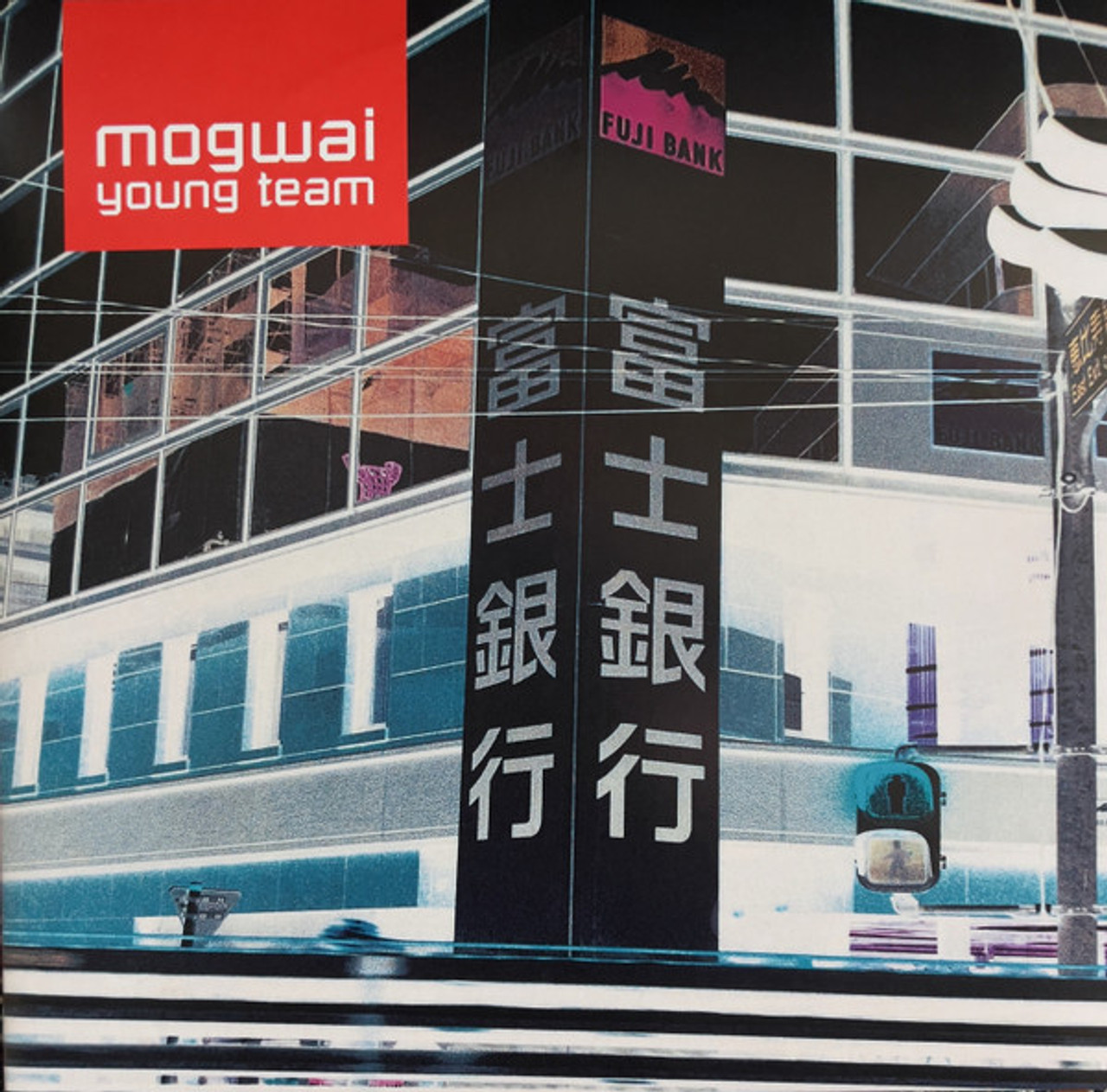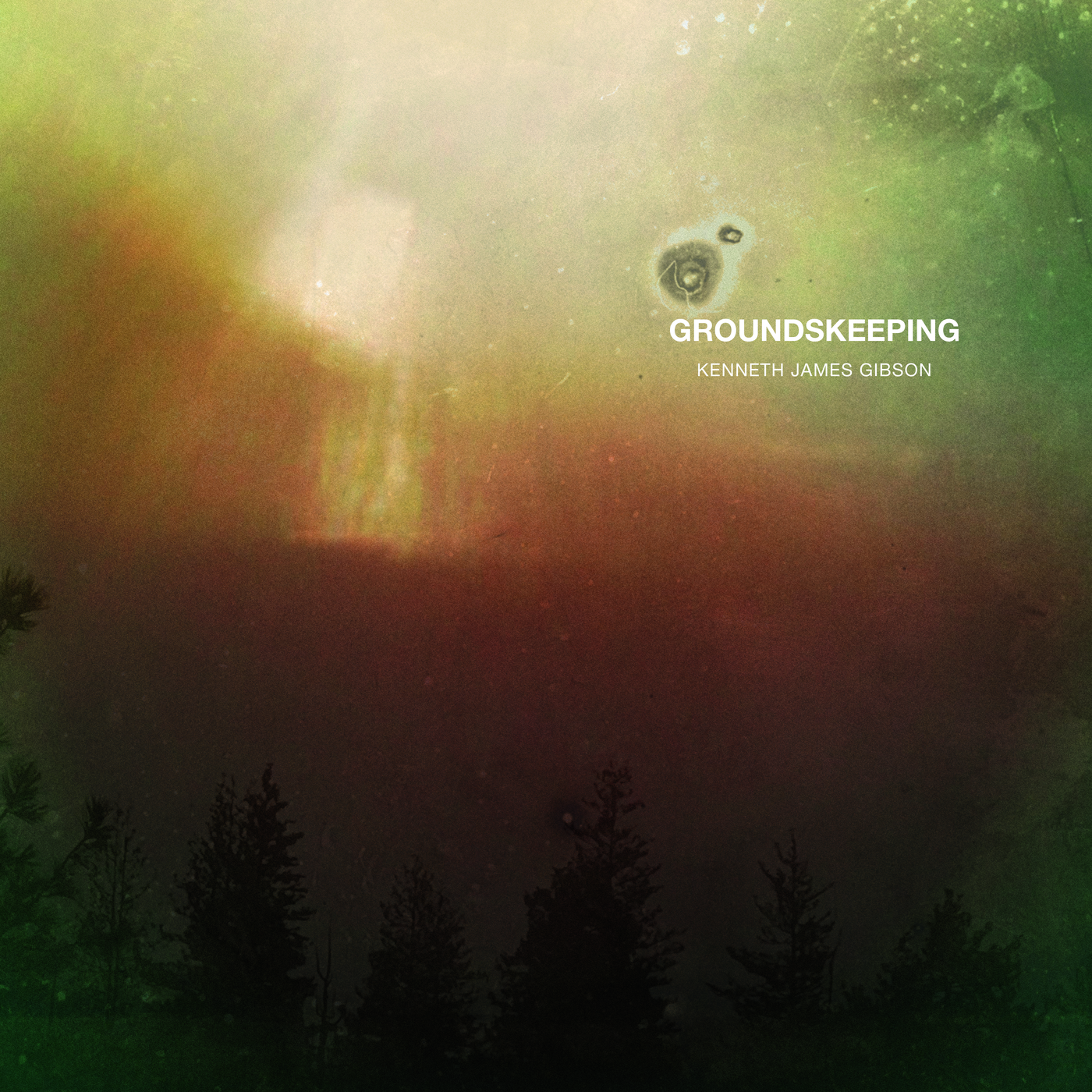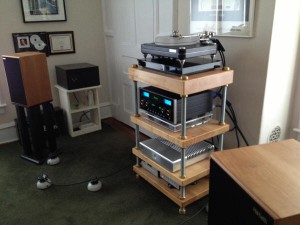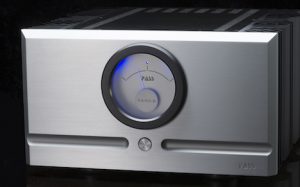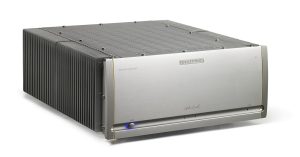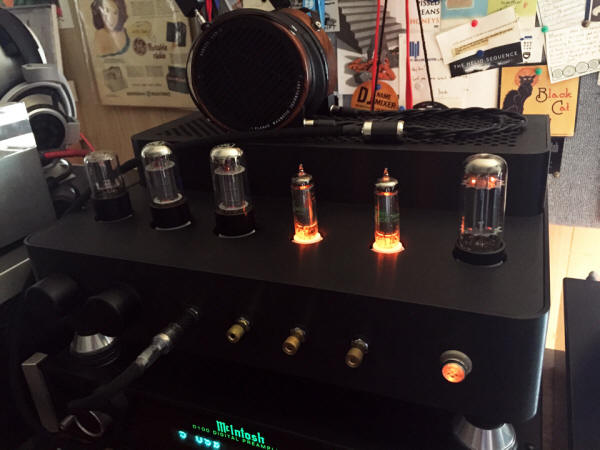
ALO's Studio Six has been an integral part of the heart-and-soul of my beloved Sonic Satori Personal Audio Lab since its inception. What the hell is the SSPAL? For the un-initiated: I've been working on a range of headphone systems that, IMHO, reproduce some of the most musically-engaging, excitable, and sonically addictive music playback experiences I could find.
In essence, as I got this idea while speaking with him, I wanted to replicate the first floor of Harry Pearsons' well-known (in the audiophile community) Sea Cliff home. This is where his jaw-dropping "room 3" high-end audio system resided, as well as two other rooms of bleeding-edge stereo sound. Those systems were, at their peak, so incredibly engrossing that the audible often became visual. I will never forget listening to Ella Fitzgerald's Clap Hands Here Comes Charlie on the E.A.R Discmaster magnetic-drive turntable, played through the Nola Grand Reference System, being driven by all ASR Emitter battery-powered components, from phonostage to amplifiers. The imaging was so dimensional, so spatially tactile, that I got up from my listening chair and walked from one end of the room to the other (left-to-right and right-to-left) because I swore I could feel Ella Fitzgerald as she grabbed the microphone. I could hear her clothes rustle as she moved around the soundstage. It was truly holographic, and, frankly, trippy as hell.

I've been chasing that hi-fi dragon ever since. The Sonic Satori Personal Audio Lab employs headphones and headphone-related equipment that give me glimpses into heavy listening sessions like that one. Sometimes I end up listening for many hours if the systems' really cookin'. It's my ultimate man-cave, providing a sonically-driven escape from the every-day trappings of the rat-race and the non-stop interconnected economy. It's where I go to lose myself in my music.
Now, before that lil' brain-dump I had this amazing intro in my head, as ALO's Studio Six was the very first "reference"-level tube headphone amp I bought for the SSPAL. From the moment ESKMOs' "Cloudlight" began playing through my Audeze LCD-3s during my audition of the Six at T.H.E Headphonium during T.H.E Show Newport three years ago, I knew I was going to move heaven and Earth to review it, and buy this sucker. It's a freakin' beast, bottom-line: Musically and physically. The Studio Six can drive four low-impedance headphones simultaneously, and do it without signal degradation in any of the four outputs. Believe me, this isn't BS. I've done it numerous times since Ken Ball of ALO let me take the Studio Six home after that show! Ken pulled a brilliant audio-crack dealer move there. I mean, judging by the smile on my face during the listening sesh, he had to know I'd never give it up. Well-played sir! That feature also makes it the ultimate reviewers' tool. When comparing headphones, I can play musical cans (in case that goes over some heads: it's just like "musical chairs"—all I have to do is take one off and put another on). I don't have to worry about any other variables. The rest of the system remains intact.
Perhaps it's a lil' overkill for the average consumer. That's OK. The Studio Six was not built for average consumers. ALO sought to build a tube headphone amplifier of the highest caliber with the Six, and I should just say up-front: I believe they pulled it off.
Obviously, this was no easy task. They initially showed and played the amp at CanJam at Rocky Mountain Audio Fest a year before I got to take it home from the Newport show. Ken Ball wasn't happy with it, and as much as I loved the sound of the amp at-first, the earlier prototype had noise issues. The project must've been a tremendous undertaking for them, considering ALO built its reputation in the Head-Fi community through their portable audio solutions. I say this because they didn't take an easy route when it came to the Studio Six's vacuum tube implementation. It makes for some wicked tube-rolling, but with one 6SN7, two 6V6s, two OB2 gas-regulators, and one 5AR4—this amp looks, feels, and sounds vastly apart from the rest in its class. What a terrific power amp to build the Sonic Satori Personal Audio Lab around! I knew that as the SSPAL grew, with its unique array of tubes, I would be able to continually experiment with the Studio Six for years to come. Three years later, I'm still playin' around with the amp, and enjoying the hell outta the thing. As soon as I'm almost, in one way or another, bored with its sound signature, I can always find something to change its character: New tubes (or NOS for that matter), power cord, interconnects, isolation devices, etc. Perhaps the greatest compliment I can pay this amp is that it reveals the smallest system changes instantly. That's transparency and resolution for ya.
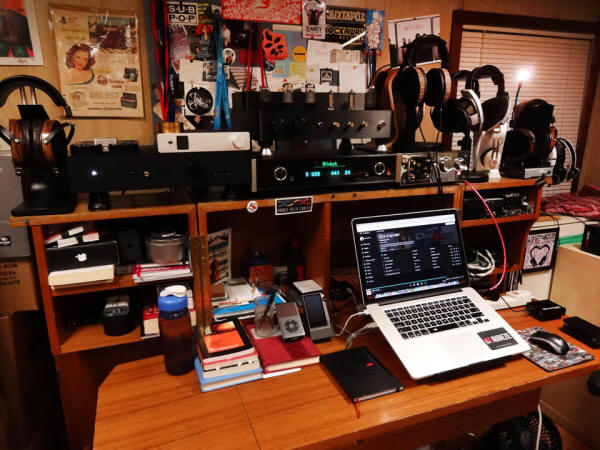
Those characteristics were part of the mission when it came to the SSPAL. Sure, the most important thing has always been a sound systems ability to connect me to my music. It doesn't matter how much it costs. Being a confessed music addict, I couldn't give a shit whether it's an antique radio or a $50,000 turntable. If a component or a system plays music that's engaging, interesting, soulful and downright infectious, I'm in. I built the Sonic Satori Personal Audio Lab, and gave it the "Lab" tag because I wanted to conduct an on-going home audio experiment centered around my passion for recorded music.
This on-going journey is also attached to headphone culture specifically. I wanted to build a collection of systems that represented the leading-edge of the personal audio arts. Something to aspire to, system-wise, and provide references that continue to inspire me every day. The equipment in theSSPAL keeps me diggin' through the crates, and reproduces even my most played-out tracks in ways that engage all my senses. One of the things I love most about a great sound-system is how it triggers my memories. I guess, on some level, the SSPAL acts like a time machine, as Harry Pearson once wrote. If a system plays music in such a way that renders time irrelevant, eases my stress, and takes me on a journey of self-discovery, sadness, or joy, I know I've got something special.
After all, no matter how any of us break this stuff down—we're listening to music. Music is art, and art cannot be quantified. Gear can be measured by machines. You can test your headphones for frequency response and your amplifier for power output, but after twenty-plus years messing around with audio, I can tell you that even with the best measurements, sometimes a component can turn out lifeless; just as a pair of headphones that measured poorly can sometimes deliver beautiful music.
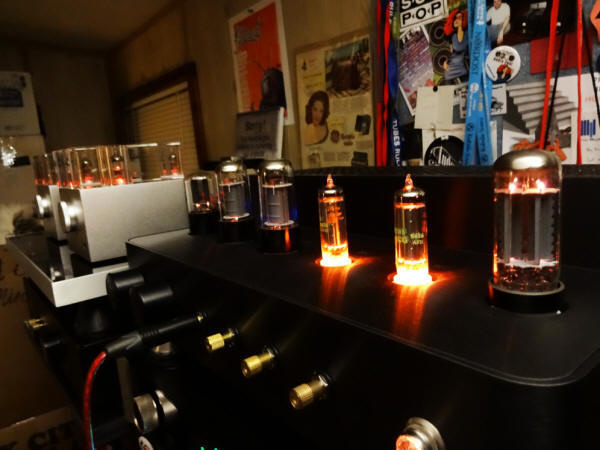
As for the Studio Six: I enjoy its sound and its aesthetics, but it was also the first personal audio component I bought that flipped the script on the self-centeredness of headphone listening. By providing four powerful outputs (via 1/4"), all capable of driving low-impedance cans, ALO created a high-end, high-performance headphone distribution amplifier! Typically these multi-output headphone distro amps aren't designed for high fidelity. They're utilized in live rooms at recording studios, giving each musician their own monitor-mix in their cans. The unit I used to use was built by a company called Rolls. I think it cost me about eighty-five bucks. It had one input, five outputs, and fit in the palm of my hand. Many artists my age, with home recording equipment, are accustomed to this level of performance from their cans in that environment.
So when I brought my ALO Studio Six to Red-House Studios up here in Northern Cali, the band I was engineering for went nuts. Of course I also toted my MYTEK Stereo-192 DSD DAC, 3 pairs of Audezes and my Sennheiser HD800s (plus my MacBook Pro Retina SSD laptop w/ Amarra Symphony software for source). The whole experience was alien to these guys. One of em' even asked me if the amplifier was "an antique"? Said he didn't know they made "tube-amps for consumers." He thought "tubes only existed in bass and guitar amps, pro-audio stuff like that." When I started talking about high-end personal audio, and some of the new technologies their eyes lit up. They were especially surprised and more excited when I talked about new tube-gear.
But they got hooked once they heard their own music through it: What we'd been slaving over for days.The drummer and bassist wanted help choosing new headphones as soon as possible. That's the kind of excitement and wonder I experienced when I was introduced to high-end personal audio. After listening to two-channel on my stereo for so long (I'm not knockin' that—I still love my stereo) when I realized there was another audio frontier to explore, after all this time, I was like a kid in a candy store. The ever-evolving personal audio hobby and industry provided an exciting path to new sonic discoveries. So I set-out to create the SSPAL in order to keep my music sounding fresh, and explore new territory in personal audio playback. ALO's Studio Six is actually part of the foundation of this on-going quest, and I'm psyched to report that it keeps-on impressing me after all this time.
I've been through a bunch of tubes since it first graced my desktop. There's a healthy Studio Six thread on Head-Fi.org—and I've been the lucky recipient of some great tips there. It's good to hear from and exchange ideas about the amp with fellow enthusiasts. My correspondence there actually landed me with the tube configuration I have now, and it's never sound better. At the moment I'm running: 1 (NOS) RCA 6SN7, 2 TONG SOL 6V6s, 2 Raytheon 0B2 gas regulators, and a Mullard 5AR4 (thanks to Ken at ALO for that sweet cherry on-top). For the sonic commentary I chose the cans I use most on my Six,and of course my main reference gear in the SSPAL:
Associated Equipment:
Headphones:
Audeze: LCD-2 w/ Fazor
LCD-XC
EL-8 open-backs (still new, under evaluation)
MrSpeakers: Alpha Prime
Sennheiser: HD800
Sources:
MacBook Pro Retina SSD/Amarra Symphony – digital source
McIntosh D100 DAC/Line-Stage
VPI Traveler turntable w/ Ortofon 2MBlue cartridge, Sonicweld Dampclamp, and Gingko Audio Cloud9T Iso-Base
Unison Research Simply Phono tube phonostage – analog source
Cabling:
Nordost Heimdall 2 USB cable
Nordost Heimdall 2 interconnects
Black Cat Cable LectraLine interconnects
Nordost Heimdall 2 power cords (McIntosh D100, VPI Traveler, Simply Phono)
Kubala-Sosna Emotion power cord (Studio Six)
Power Products:
Nordost QRT QB8 power distribution
Nordost Qv2 Quantum
Nordost Qk1s (4)
Tweaks, etc:
Redpoint Audio Black Holes – iso-points under Studio Six
Vibrapods – under McIntosh D100
Black Ravioli Sticky Pads under Unison Research Simply Phono
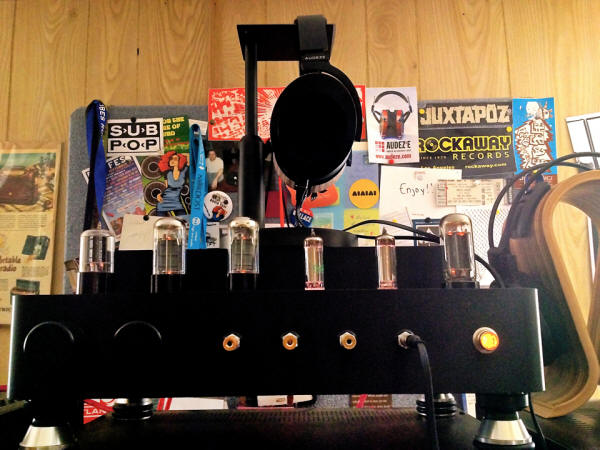
For my sonic commentary I decided to bring over a part of our process over at Head-Fi, like I did with my recent article on the Audeze EL-8. At Head-Fi, when you're making evaluations of gear, and you haven't had it long enough for a full review, they call these reports "Impressions". I found that I love doing the impressions live—meaning listen and type, describing what I'm hearing as I hear it. Since these aren't "impressions," I'm going to label the ones that I did below "Live Session" and the others are done the way many of us construct our equipment reviews: I take all my notes and form them into complete thoughts. Getting' a real look at my notes from listening sessions isn't a good idea. I may seem a bit nuttier than some people think.
"Angel", Mezzanine, Massive Attack
44.1kHz/16-bit FLAC
Live Session
"Angel" has been a part of my ACID TEST TRAX playlist for years. It's an ever-changing, ever-growing, and shrinking list of songs and tracks that I use in order to test a systems musical and sonic capabilities. It's also a veritable shopping list of stuff that'll either make the system shine in new ways occasionally, or show me its weaknesses. This sort of playlist is obviously very personal, as I stillgotta pick music I love. I don't care if a song sounds terrific. If it doesn't move me, it's useless.
This track is timeless. The album was recorded at a time when critics didn't quite know how to classify this sound. We might call it intelligent electronic music today, and even if that's become an empty phrase, it fits perfectly here. The oddly gated bass synth that opens the track is unmistakable, followed by these sharp-hitting minimal percussive elements, punctuated with this snappy rim shot. The vocal drifts by, and then come at me, sounding like their draped over the rhythmic sounds driving the tracks. The vocals and the percussion continually build and subside. These distorted guitar riffs ride the rest of the song, an awesome wash of bass, sound effects, hovering vocals, and this sense of darkness that only Massive Attack can produce. The Studio Six and Audeze LCD-2 w/ Fazor (w/ Double Helix Cables Comp4) are a glorious combination for this track. It's all there, with authority, magnificent dimension, and lightning-fast transient response. If you don't know this track, do yourself a favor and check it out ASAP.
"Limit to Your Love", James Blake, James Blake
44.1kHz/24-bit FLAC
Live Session
This track floored me when I first heard it on 7". I heard the single before the album, and it wasn't only captivating, it sounded so fresh. The sound of Blake's strange tonality weaving in and out of this wicked, dirty bass-line is so F----in brilliant. The sparse piano made it sound like a melancholy pop song, but it's really a piece of forward-thinking experimental electronic music. I had a feeling Blake was using a Roland TB-303 or one of the now highly-sought-after original drum machines from Roland in order to create that thundering bass. However, having played with those machines in our studio, frankly I had no Earthly idea how he got the bass-line to sound like this. I've played this on many friends' systems, and they thought their woofers were bottoming out. This will show you what your system can handle on the low-end, I assure you. It's also, as I said above, something that sounds as fresh as when I first heard it years ago. The MrSpeakers Alpha Prime and Six (w/ Nordost Heimdall2 cable) have been purring to this—meaning they're coasting. There wasn't anything here the system couldn't handle. The Studio Six is a bad ass amplifier, pardon my French.
"A Song for You", A Donny Hathaway Collection. Donny Hathaway
44.1kHz/16-bit AIFF
Live Session
This not only one of my favorite tracks to test a system, but it's also one of my favorite songs. Hathaway is so vulnerable here it's infectious. The recording is top-notch too, from the early 70's (produced by Arif Mardin,Tommy Dowd, and Jerry Wexler). There is some tape noise, but it's not too loud and the colors of the music are vibrant. The song is sparse, but it was recorded in a large studio, so there's a ton of air in this track. It helps re-create this sense space, but it's also controlled. That's a difficult thing to describe, but when a system is cookin'—as this is right here—the space gets charged through Hathaway's emotive power and courage. He was courageous because he lays it all down. With the Six and Audeze LCD-XCs (w/ Double Helix cables Comp4), the sound I'm getting here has forced my hand into hitting repeat numerous times. I can't even remember where I started. This combo captured the essence of what makes this song and recording so damn great. Another indefinable characteristic of music: Soul. If you're into this type of music and don't know about Donny Hathaway – check him out.
"Special N", Les Revenants, Mogwai
12" vinyl
Live Session
I reviewed this pressing for Big Black Disc a while ago. When I got the record I read about the movie, but I never thought it would turn into all these television series. I'm glad, why I'm not sure, that I heard the record before all the hype. I should say that Mogwai's never failed me that way, but you never know what a hype machine can do to your appreciation of something. This is a splendid record which, whether they like it or not, shows Mogwai's maturity. Or, maybe, they just got really high, and danced for days, and wrote the album. Either way, the sound gets to me every time. It's instrumental as many of their tracks are. They combine strings, drums, synths, guitars, and all sorts of other noise-makers in a fantastically tight composition. The resulting crescendos and soaring arrangements conjure up memories of being a kid with no worries in the damn world. That's how light it was, how illuminating this song can be for me. Might sound like hippie BS, but it's how I felt when I played the album, especially this track.
For this I chose my Sennheiser HD800s to rock with the Studio Six. The 800s throw a soundstage, and produces a full-bodied sound at the same time like no other I've heard yet. The strings and other instruments had plenty of room to breathe, while the kick-drum and others smacked-down with power and snap. They managed to record all the musical elements in tight—but it doesn't sound congested. You can still pick things out. But I think, perhaps, Mogwai was attempting to make this record sound like the vibe of the song: Intimate. But they didn't squash it. That's not easy to accomplish.
"Jigsaw Falling Into Pieces", In Rainbows, Radiohead
44.1kHz/24-bit FLAC
Live Session
Yet another masterpiece from Radiohead. "Jigsaw Falling into Pieces" was one of the stand-out tracks of In Rainbows for me. I love it when this band builds up their energy in a song and they don't let up til' it's over. This speedy, smackin' kick-drum punches this track into its non-stop build. Flanked by the up-beat, almost-frantic drumming, with the guitar and bass keeping pace, Thom Yorke just drops his vocal over the frantic energy of the instruments and floats his words in a masterful way in-sync with the music, but also coming in and out. It's the sort of dance we've come to expect with Nigel Godrich producing. The sound of the recording is also deep and dynamic—another thing we've come to expect from Godrich and Radiohead when they work together.
My Audeze LCD-2 w/ Fazor (via Double Helix Cables Comp4) was the right choice for this sesh. The bass was clearly defined, as were the guitars and drums. Yorke's vocals were immediate. I could hear when he was straining a bit, giving his all to every track. He's in great voice for this song. The Studio Six played this backed in truly spine-tingling fashion. Having seen Radiohead a couple times now, the sound was as compelling as I've heard. It had my tappin' my foot the whole time—and I must've hit repeat on that one more than the other. Thankfully, the song never gets old.
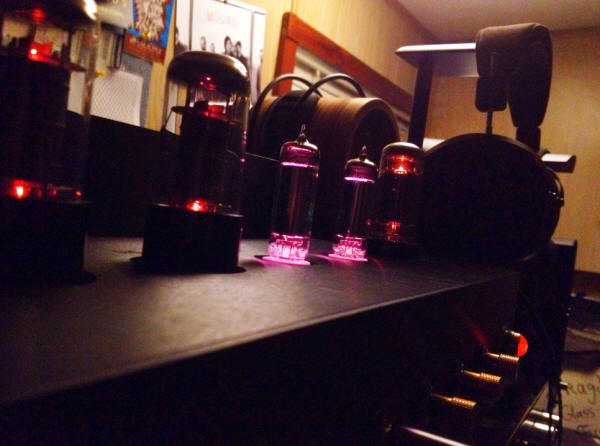
As I was coming to the end of those sessions I couldn't help myself. It was time for Thom Yorke's latest record: Tomorrow's Modern Boxes (reviewed HERE at PF). When the panning synths starting pingin' back-n-forth, and Yorke's vocals were appearing, and then breaking away into helicopter-like sounds, I remembered how much I love this damn amp. It's got the obvious "warm" sound people usually equate with tubes, but it's also got amazing control of the low-end and lower-midrange. I usually prefer a mix of tubes and solid-state in my system because tube gear often falls short when it comes to serious sub-bass control. With the current tubes installed, I have no such fear with the Studio Six. I can play anything through it without issue, from Miles Davis to Plastikman, jazz to techno, and the amp glides through all of it. Like I mentioned earlier: It's also a killer reviewers' tool, with the four outputs. That also makes for some terrific listening sessions at home with friends too! The Studio Six has provided me with some incredible listening sessions over the years. Given the proper front-end system, it's capable of amazing things. I'm so glad it was the first amp at the Sonic Satori Personal Audio Lab. It's remained in the very front of the game for years, and has kept me excited to listen to my music whenever I use it.
Can I ask for more than that? If you're seeking something this grand—figure out a way to give it a listen...
ALO
www.ALOaudio.com
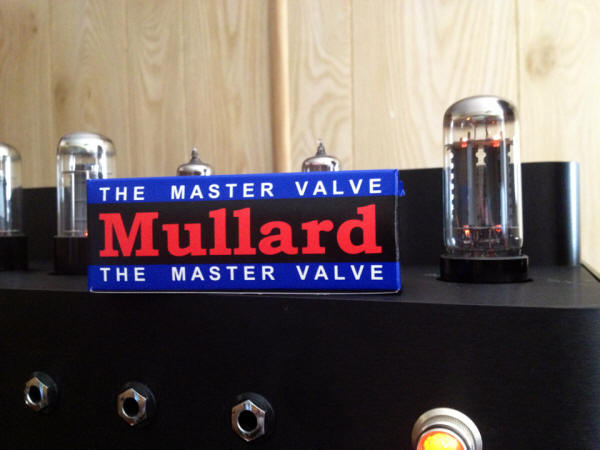
Image processing by David W. Robinson





